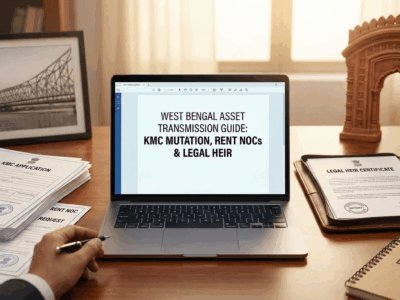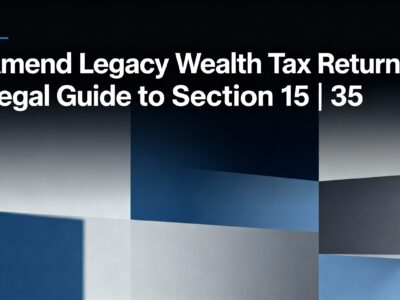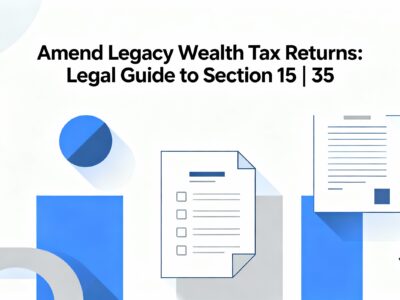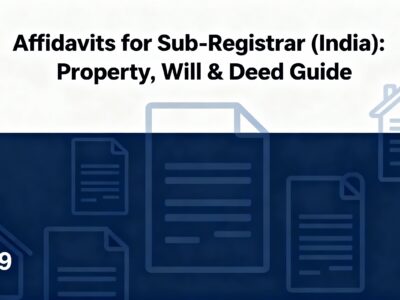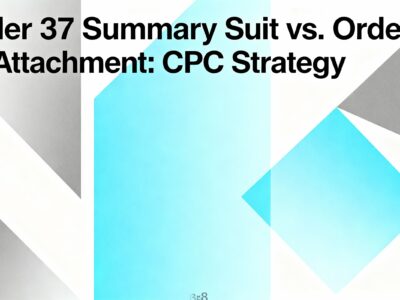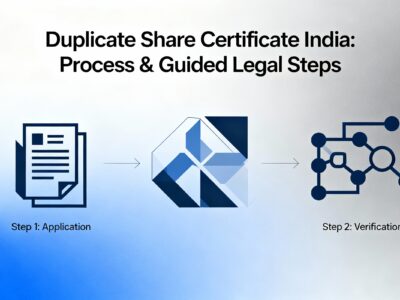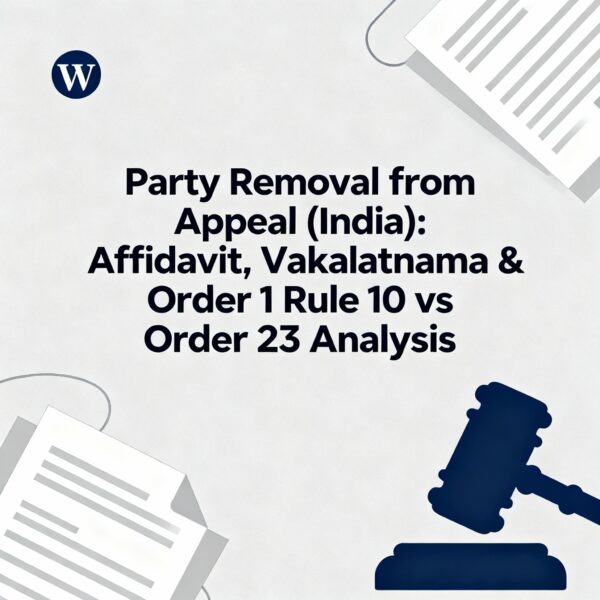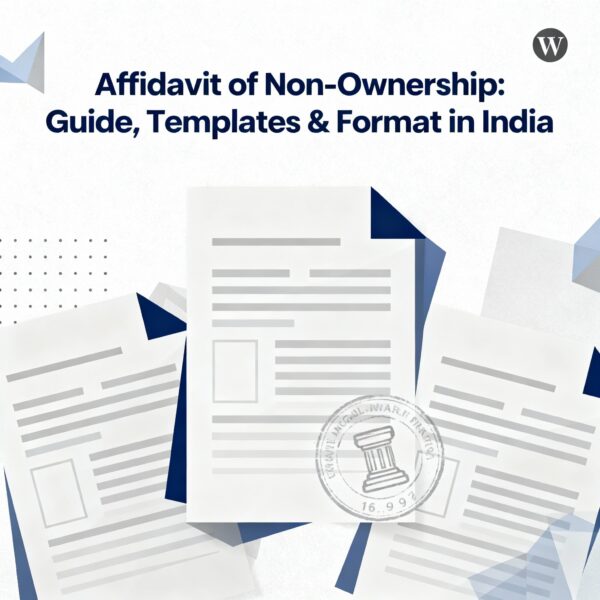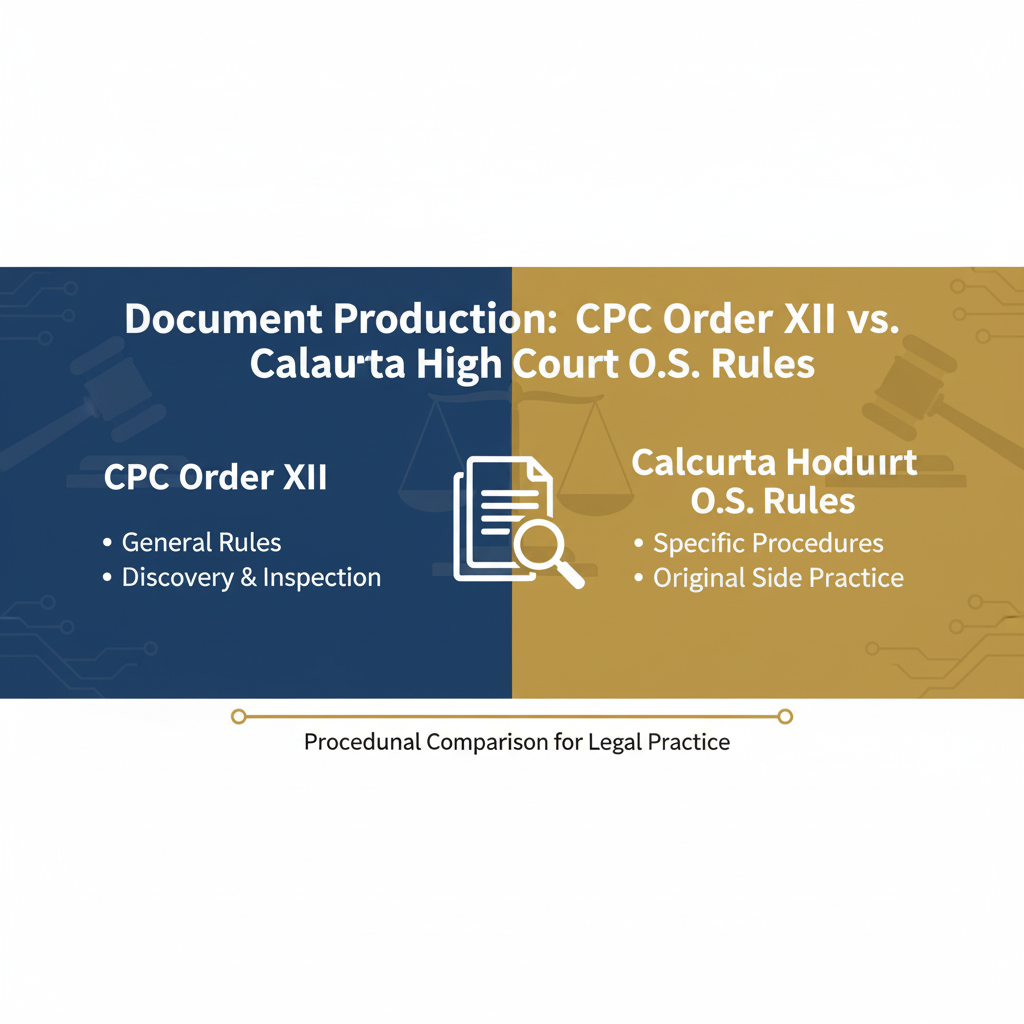Arrest Before Judgment (O.38 CPC): Procedure, Grounds & Affidavit Format
The power to order an Arrest Before Judgment under Order XXXVIII of the Code of Civil Procedure, 1908 (CPC) is one of the most stringent provisional remedies in Indian civil law. As it directly curtails personal liberty, courts exercise this power with extreme caution, demanding strict proof of the defendant’s malafide intent to obstruct justice. This comprehensive guide provides a deep legal and procedural analysis, covering the specific grounds for arrest, the critical role of a well-drafted affidavit, the process to furnish security, and key judicial interpretations that shape its application in India.
Arrest Before Judgment: A Deep Dive into Order XXXVIII of the CPC
A Comprehensive Legal and Procedural Analysis for Practitioners
The Power of a Drastic Remedy
The Code of Civil Procedure, 1908 (CPC), provides for certain provisional remedies to prevent justice from being defeated. Among the most severe is the court's power to order the arrest of a defendant before a judgment is even delivered. This authority, found in Order XXXVIII, Rules 1 to 4, is a major departure from standard civil procedure.
Because it directly impacts personal liberty—a right fiercely protected by the Constitution—the judiciary considers it an extraordinary power. It is to be used with extreme caution and only when the strict legal conditions are met. This guide explores the legal architecture, procedural roadmap, and strategic considerations of this potent legal tool.
Part I: Understanding the Legal Framework
Grounds for Arrest: The Two Core Conditions
Order XXXVIII, Rule 1 allows a court to issue an arrest warrant if it is satisfied by affidavit or otherwise that one of two conditions is met. The defendant's actions must be linked to a malicious intent to obstruct justice.
The Twin Pillars of Justification
A court will only grant this remedy if the plaintiff successfully establishes two core points:
- A Bona Fide and Unimpeachable Claim: The plaintiff must demonstrate a strong, genuine case that has a reasonable chance of success. A weak or speculative suit will not support such a drastic measure.
- Proven Malafide Intent: It is not enough that the defendant is leaving. The plaintiff must provide specific evidence showing the defendant's actions are motivated by an "intent to delay, avoid, or obstruct" the execution of a potential decree.
Exception: Suits for Immovable Property
Rule 1 explicitly states that this provision does not apply to suits of the nature referred to in Section 16, clauses (a) to (d) of the CPC. This is a critical exception.
This means a defendant cannot be arrested before judgment in suits for:
- The recovery of immovable property.
- The partition of immovable property.
- Foreclosure, sale, or redemption in the case of a mortgage of or charge upon immovable property.
- The determination of any other right to or interest in immovable property.
The rationale is that in such suits, the property itself serves as the primary security for the plaintiff's claim.
Part II: Constitutional Scrutiny & Human Rights
The power of civil arrest invariably raises questions about its compatibility with Article 21 of the Constitution of India, which guarantees the right to life and personal liberty. Courts have consistently held that any procedure depriving a person of liberty must be "just, fair, and reasonable."
Balancing Act: Justice vs. Liberty
The Supreme Court, particularly in cases like Jolly George Varghese v. Bank of Cochin, has read down the provisions for civil imprisonment. The key takeaways are:
- Mere Inability vs. Willful Refusal: Arrest is not justified for a simple inability to pay a debt. There must be an element of bad faith, dishonesty, or a willful refusal to pay despite having the means.
- Due Process Safeguards: The procedure in Order XXXVIII, with its requirement of a strong affidavit and a 'show cause' hearing, is considered a vital due process safeguard that prevents the arbitrary use of this power.
- Last Resort: Civil arrest is a measure of last resort, not a routine method for debt collection. The court must be convinced that no other alternative remedy is adequate.
Part III: Who is Exempt from Arrest?
The CPC carves out specific exemptions, recognizing that the power of civil arrest should not be absolute. Certain individuals are protected due to their status or the nature of the claim.
Women (Section 56)
A woman cannot be arrested in execution of a decree for the payment of money. This is a significant protection based on public policy.
Judicial Officers (Section 135(1))
Judges, Magistrates, and other judicial officers are exempt from arrest under civil process while going to, presiding in, or returning from their court.
Legislators (Section 135A)
Members of Parliament and State Legislatures are exempt during the continuance of a legislative session and for a period of 40 days before and after such session.
Part IV: The Affidavit - The Evidentiary Cornerstone
The entire application hinges on the quality of the supporting affidavit. It is not a mere formality; it is the primary piece of evidence the court will consider. A vague or poorly drafted affidavit will fail.
Anatomy of an Effective Affidavit
1. Caption & Deponent's Intro
Correctly identify the court, suit number, parties, and the deponent. Establishes the foundation of the document.
2. The Factual Matrix
Numbered paragraphs detailing the claim, the defendant's conduct, and the basis for apprehension. This is the heart of the affidavit.
3. Specificity is Paramount
Avoid generic statements. Provide dates, names, locations, and specific actions. Disclose sources of information and grounds for belief.
4. Verification
The deponent must swear to the truthfulness of the contents, distinguishing between personal knowledge and information received.
Interactive Guide: Drafting for Different Scenarios
The focus of the affidavit changes based on the defendant's actions. Select a scenario below to see key drafting considerations and template clauses.
Scenario: Defendant is Absconding or Leaving Jurisdiction
Focus on demonstrating that the defendant's departure is clandestine and timed to evade the lawsuit.
Key Evidence to Plead:
- Recent and sudden resignation from a job without a new one.
- Moving family and household goods to an unknown location.
- Statements from credible third parties (e.g., colleagues, neighbours).
- Timing of these actions immediately after receiving the court summons.
Sample Clause:
"That I have credible information, received from the defendant's employer, Mr. [Name], that the defendant has tendered his resignation on [Date] without citing any future employment. This action, coming just days after the service of summons, is a clear indication of his intent to leave the local limits of this Hon'ble Court to obstruct any decree that may be passed."
Scenario: Defendant is Disposing of Property
The goal is to show the sale is not a normal business transaction but a hurried attempt to liquidate assets and make them unreachable.
Key Evidence to Plead:
- Listing properties for sale at a price significantly below market value.
- Attempting to sell assets that are core to their business operations.
- Transferring property to family members for little or no consideration.
- Copies of sale listings, advertisements, or witness accounts.
Sample Clause:
"That the defendant, with a clear intent to defeat the execution of any decree, has listed his sole immovable property at [Address] for urgent sale, as evidenced by the advertisement annexed herewith as Annexure-A. The said property is being offered at a price far below its market value, indicating a desperate attempt to convert assets to cash and remove them from the jurisdiction of this Court."
Scenario: Defendant is About to Leave India
This requires showing circumstances that make it highly probable that their departure will hinder the execution of a future decree.
Key Evidence to Plead:
- Booking one-way international flights.
- Applying for long-term visas to other countries.
- Closing bank accounts and winding up business affairs in India.
- Lack of any significant assets or family ties remaining in India.
Sample Clause:
"That I have reliable information that the defendant is about to leave India permanently. He has closed his business operations, and I am informed by a reliable source that he has booked a one-way flight to [Country] for [Date]. As the defendant has no immovable assets in India, his departure will make the execution of any decree passed against him practically impossible, thereby causing me irreparable loss."
Part V: The Procedural Roadmap
The process for obtaining an arrest order is a structured, multi-stage journey with built-in safeguards for the defendant.
Part VI: Security for Appearance & Role of Surety
Once the defendant is brought before the court, the focus shifts from arrest to ensuring their future appearance. This is governed by Rules 2, 3, and 4 of Order XXXVIII.
Procedure at the "Show Cause" Hearing (Rule 2)
If the defendant fails to show cause, the court will order them to either:
- Deposit in Court: Deposit a sum of money or other property sufficient to answer the claim against them.
- Furnish Security: Provide a surety who guarantees their appearance at any time when called upon while the suit is pending.
If the defendant complies with this order, they are released from custody. Failure to comply results in committal to the civil prison.
Discharge of a Surety (Rule 3)
A person who has provided security for the defendant is not bound indefinitely. A surety can apply to the court to be discharged from their obligation.
Process for Surety Discharge:
- The surety files an application for discharge.
- The court issues a summons to the defendant to appear.
- If the defendant appears, the court discharges the surety and orders the defendant to find fresh security.
- If the defendant fails to find fresh security, they may be committed to civil prison.
Part VII: Duration and Conditions of Detention
The detention of a defendant in a civil prison under Order XXXVIII is not indefinite. The CPC, under Section 58, prescribes clear limits on the duration of such detention.
| Condition | Maximum Period of Detention |
|---|---|
| Where the decree is for payment of a sum exceeding ₹5,000 | Not exceeding 3 months |
| Where the decree is for payment of a sum between ₹2,000 and ₹5,000 | Not exceeding 6 weeks |
| Where the decree is for payment of a sum less than ₹2,000 | No order for detention shall be made. |
It is crucial to note that under Rule 4, a person shall not be detained under this order for a longer period than what is prescribed by Section 58 for the execution of a decree.
Part VIII: Safeguards, Liabilities & Strategy
The law provides checks and balances to prevent misuse. Both parties must understand the rights, remedies, and potential liabilities involved.
Defendant's Shield
A defendant targeted by a wrongful application has several avenues for recourse:
- The 'Show Cause' Hearing: The primary opportunity to present contrary evidence and prove bona fides.
- Compensation under Sec 95: The defendant can apply to the same court for compensation up to ₹50,000 if the arrest was on "insufficient grounds".
- Criminal Action: A plaintiff who files a false affidavit can be prosecuted for perjury under the Indian Penal Code.
Plaintiff's Peril
Filing a weak or malicious application carries significant risks for the plaintiff:
- Financial Liability: Risk of paying compensation under Section 95 and costs under Section 35A.
- Criminal Prosecution: Potential imprisonment and fines for giving false evidence.
- Loss of Credibility: An attempt to mislead the court can damage the plaintiff's credibility in the main suit itself.
Risk vs. Reward Analysis for the Plaintiff
Part IX: Key Judicial Pronouncements
The interpretation of Order XXXVIII has been shaped by landmark judgments that emphasize caution and strict adherence to the law.
V.C. Nathan v. V.K. Jaganathan, AIR 2003 Mad 225
The court held that the power of arrest is drastic and must not be used on mere suspicion. The affidavit must contain clear and specific particulars, and the court must record its satisfaction regarding the defendant's malafide intent. A mechanical order is impermissible.
Govardhanlal v. M.P. State Road Transport Corpn., AIR 1982 MP 56
This case reiterated that the twin conditions—a prima facie strong case for the plaintiff and the defendant's intent to defeat the decree—must be satisfied. The court's jurisdiction is not to be exercised lightly.
U. Sunder Rao v. K. Nagaratna, AIR 1985 Kant 127
It was emphasized that mere departure from jurisdiction is not sufficient. The plaintiff must provide material evidence to show that the departure is specifically to obstruct or delay the execution of a potential decree.
Part X: Template Formats for Practitioners
Below are sample formats for the application and the supporting affidavit. These should be adapted to the specific facts and circumstances of each case.
Sample Application Under Order XXXVIII, Rule 1
IN THE COURT OF ____________, [CITY]
CS OS NO. ____ OF 20__
IN THE MATTER OF:
[PLAINTIFF'S NAME] ...PLAINTIFF
VERSUS
[DEFENDANT'S NAME] ...RESPONDENT
APPLICATION UNDER ORDER XXXVIII RULE 1 OF THE CODE OF CIVIL PROCEDURE, 1908 FOR ARREST OF THE DEFENDANT BEFORE JUDGMENT
The Plaintiff most respectfully submits as under:
1. That the Plaintiff has filed the accompanying suit for [briefly describe the nature of the suit]. The contents of the plaint may be read as part and parcel of this application.
2. That the Plaintiff has a strong prima facie case and is likely to succeed in the suit.
3. That the Defendant, after service of summons, with the malafide intent to obstruct and delay the execution of any decree that may be passed, is about to [abscond/leave the jurisdiction of this Court/dispose of his property/leave India].
4. That the Plaintiff has detailed the specific actions of the Defendant in the accompanying affidavit, which clearly shows his intent to defeat the ends of justice.
5. That if the Defendant is not arrested and directed to furnish security for his appearance, the Plaintiff will suffer irreparable loss and injury, and any decree passed in favour of the Plaintiff will be rendered infructuous.
PRAYER:
It is, therefore, most respectfully prayed that this Hon'ble Court may be pleased to:
a) Issue a warrant for the arrest of the Defendant and bring him before this Court to show cause why he should not furnish security for his appearance.
b) Pass such other and further orders as this Hon'ble Court may deem fit and proper.
PLAINTIFF
Through
[ADVOCATE'S NAME]
Sample Supporting Affidavit
[COURT AND CASE DETAILS AS ABOVE]
AFFIDAVIT
I, [Plaintiff's Name], son of [Father's Name], aged about __ years, resident of [Address], do hereby solemnly affirm and declare as under:
1. That I am the Plaintiff in the above-mentioned suit and the deponent herein, and as such, I am fully conversant with the facts and circumstances of the case.
2. That the contents of the accompanying application under Order XXXVIII, Rule 1 are true and correct to my knowledge and the same may be read as part of this affidavit to avoid repetition.
3. That the Defendant is liable to pay a sum of [Amount] to me, which is the subject matter of the present suit.
4. That I have received credible information from [Source of Information, e.g., a mutual acquaintance, a travel agent, defendant's employee] on [Date] that the Defendant is making preparations to leave the jurisdiction of this court permanently.
5. That I have personally verified this information and found that the Defendant has [State specific actions, e.g., sold his car, put his house on rent, resigned from his job on (Date)]. Copies of relevant documents, if any, are annexed herewith.
6. That the aforesaid actions of the Defendant are solely with the intent to delay the proceedings and obstruct the execution of the decree that may be passed against him.
7. That the Defendant has no other movable or immovable property within the jurisdiction of this court from which the decretal amount could be recovered.
DEPONENT
VERIFICATION:
Verified at [Place] on this __ day of [Month], 20__, that the contents of the above affidavit from paragraphs 1 to __ are true to my personal knowledge, and the information in paragraphs __ to __ is based on information received and believed to be true. No part of it is false and nothing material has been concealed therefrom.
DEPONENT
Part XI: Strategic Checklist for Counsel
Before deploying or defending against this powerful remedy, counsel should undertake a rigorous strategic review.
For Plaintiff's Counsel (Before Filing)
- ☑
Suit Strength: Is my claim bona fide and supported by strong documentary evidence? Can it withstand initial scrutiny?
- ☑
Evidence of Intent: Do I have more than mere suspicion? Can I provide specific facts, dates, and sources in the affidavit to prove malafide intent?
- ☑
Risk Assessment: Have I advised my client of the risks of compensation under Section 95 and potential perjury charges?
- ☑
Is it Necessary?: Are there less drastic remedies available? Is the defendant's action truly going to render a decree useless?
For Defendant's Counsel (On Receiving Notice)
- ☑
Urgent Response: Prepare a detailed reply to the application and a counter-affidavit immediately.
- ☑
Gather Bona Fide Evidence: Collect documents to prove the defendant's actions are legitimate (e.g., a new job offer for relocation, a genuine reason for a property sale).
- ☑
Challenge the Affidavit: Scrutinize the plaintiff's affidavit for vagueness, lack of specific details, or reliance on hearsay.
- ☑
Prepare for Security: Advise the client on the potential need to arrange for security or a surety as a contingency plan for the hearing.
Part XII: Frequently Asked Questions (FAQ)
Can an order of arrest be made without giving the defendant a chance to be heard?
No. The initial warrant is only to bring the defendant before the court to "show cause". The final order directing the defendant to furnish security or face committal is only made after this hearing, ensuring the principles of natural justice are followed.
What happens to the security if the suit is dismissed?
If the plaintiff's suit is dismissed, the defendant is discharged, and any security furnished or amount deposited by him is returned. The purpose of the security is only to safeguard a potential decree, and it ceases to have effect if no decree is passed.
Is an appeal possible against an order under Order XXXVIII, Rule 1?
Yes. Under Order XLIII, Rule 1(q), an order under Rule 2, 3 or 6 of Order XXXVIII is appealable. This provides an important check on the trial court's power.
Strategic Synthesis for Practitioners
The power of arrest before judgment highlights the tension between providing effective remedies and safeguarding individual liberty. It is a necessary but dangerous tool.
For the Plaintiff's Counsel
Reserve this remedy for the clearest cases with a strong claim and concrete evidence of malafide intent. The affidavit is everything—make it detailed, specific, and corroborated.
For the Defendant's Counsel
Act with urgency. Robustly challenge the affidavit in the "show cause" hearing by providing evidence of bona fides. Do not hesitate to use counter-measures like Section 95 if the application is baseless.

